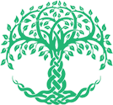Quick Search
Clinical Spectrum of Non-venereal Genital Dermatoses in Adult Males
Liza Mohapatra1, Surajit Nayak2, Satyadarshi Pattnaik2, Siddhartha Dash31Department of Dermatology, IMS & SUM Medical College and Hospital, Bhubaneswar, Odisha, India2Department of Dermatology, Venereology & Leprology, MKCG Medical college, Berhampur, Odisha, India
3Department of Dermatology, All India Institute of Medical Sciences, Bhubaneswar, Odisha, India
INTRODUCTION: This study aims to evaluate the frequency of non-venereal genital dermatoses in male patients.
METHODS: This was a descriptive, observational study was included adult male patients having non-venereal genital dermatoses attending the skin and venereal disease outpatient department of a tertiary care referral hospital between January 2014 and August 2015. All patients with any venereal dermatoses were excluded from the study.
RESULTS: The study included 200 male subjects with non-venereal genital dermatoses. The mean age of the study population was 39.8±14.1 years. Of the cases, 68 (34.0%) were dermatological, 52 (26.0%) were infectious causes, 32 (16.0%) were physiological variants, 29 (14.5%) were genital dermatoses revealed drug-induced, 11 (5.5%) were malignant, and 8 (4.0%) were idiopathic. Among the non-venereal genital dermatoses, the most common disorders were balanoposthitis with 42 (21.0%), erosive balanitis with 29 (14.5%), fixed drug eruptions with 29 (14.5%), pearly penile papules with 22 (11.0%), vitiligo with 15 (7.5%), and lichen planus with 15 (7.5%). Itching was the most common symptom in 73 (36.5%) of the cases. Glans and prepuce were the most frequent site of the involved area in 60 (30.0%) cases. Extragenital involvement was observed in 68 (34.0%) of the cases. The most common morphological presentation was papules in 50 (25.0%) cases, followed by plaques in 38 (19.0%) and erosions and fissuring in 35 (17.5%).
DISCUSSION AND CONCLUSION: Family physicians frequently encounter dermatological diseases. Therefore, the management of dermatological diseases by family physicians is important.
Keywords: Adult, genital diseases, male
Manuscript Language: English




















